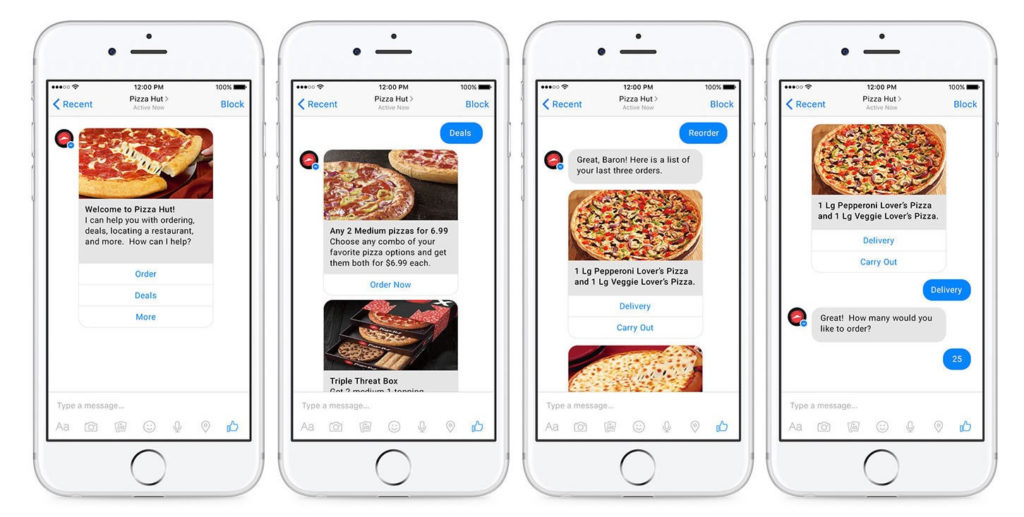
Conversational UI
Traditional interfaces (the ones we design every day) are quite similar to a conversation. With Conversational UI, the structure is the same. But instead of buttons, menus, and stars, you tell the machine what you want using words and emojis.
“Chatbot” is one example in our industry right now. Order pizza from Facebook Messenger with Pizza Hut’s new chatbot.
Other examples for chatbots are WeChat, Messenger, Kik, Slack, Siri, Alexa, Google Home.
Summary: UX research finds that tightly integrated services with a wide-ranging set of convenient features, accessed through a simple and unified design, are the reason Chinese users use WeChat so much. People mainly use traditional GUI interactions, not a “conversational user interface,” despite the hype.
https://www.nngroup.com/articles/wechat-integrated-ux/
Chatbot vs a virtual assistant
One important distinction is to separate a virtual assistant from a chatbot. Chatbots provide a very similar type of experience: a conversational interface through which a user interacts with a virtual agent. But their scope is more narrow than virtual assistants, which are more ubiquitously available across digital experiences and serve a wider range of uses.
https://medium.com/pcmag-access/virtual-assistants-and-what-can-you-do-with-them-45a4485e6210
